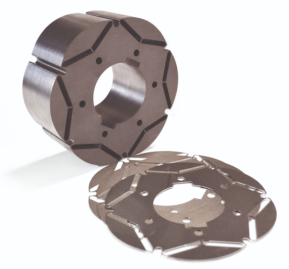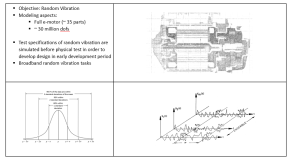Category Archive: E-Motor Design & Simulation
How to: Stress Concentrations on Shafts
Any abrupt change in parts can capture internal stresses and cause stress concentrations. Examples of these changes are the following: grooves holes notches shoulders keyseats threads splines The stress concentrations are localized… Continue reading
How to: Shaft Loads & Design Criteria, e-Motor
Overview Shaft material and optimum design are important for the efficient and trouble-free operation of an e-motor. Figure below illustrates an example of shaft for e-motor. A keyed shaft for e-motor applications … Continue reading
Into on Rotordynamic Phenomena of Rotors, e-Motors
A summary on the basic simulations to be performed are: steady state siimulations transient simulations Rotordynamic analysis has the following main parameters: rotating speed bearings mass distribution rotor inertia motor mounting… Continue reading
Strength Analysis of Rotor
Rotor design is a complex task which includes input from a series of analyses such as static, dynamics, electromagnetic, thermal analysis. One important factor that should be mentioned here is the aspect ratio:… Continue reading
Lamination Sheets
As noted on previous post, rotor and stator core consists of thin lamination sheets. These lamination sheets are packed together to form the stator/rotor lamination package. The rotor lamination package is then interference… Continue reading
Permanent Magnet Motor
Intro Permanent magnets are attached to the rotor in place of rotor windings to generate magnetic field. PM motors are limited to lower power motors, usually less than 50KW. In general, permanent magnets… Continue reading
Rotor Balancing, e-Motor
When a rotor has been manufactured and assembled, balancing test can be initiated. Balancing includes static and dynamic balancing. Balancing is important so various small irregularities can be minimized such as wrong manufacturing… Continue reading
Assembly Process of Rotor, Electric Motor
Intro The rotor assembly is formed when a shaft is interference fitted into a rotor core. The fitting characteristics are very important for reliable operation of motor and for secure transmission of torque.… Continue reading
Robustness and Durability simulation, e-Motor
Objective: Robustness & Durability Loads: Interference fit, bolt preload, PSD and sine sweep vibration profiles, etc. Solution type: Modal Analysis, Harmonic response Random vibration Fatigue Modeling aspects: Full e motor (~ 35 parts)… Continue reading
Protected: Random Vibration Fatigue Optimization, e-Motor
There is no excerpt because this is a protected post.
Random Vibration Fatigue Simulation, e-Motor
Objective: Random Vibration Fatigue Damage and Life factor estimation Developed new methodology for prestress effects in structural dynamics Reduced simulation run time of large models with parallel computation techniques
Random Vibration, e-Motor
Objective: Random Vibration Modeling aspects: Full e motor (~ 35 parts) ~ 30 million dofs Test specifications of random vibration are simulated before physical test in order to develop design in early development… Continue reading
Harmonic Response, e-Motor
Objective : Harmonic response Modeling aspects: Full e motor (~ 35 parts) ~ 30 million dofs Results of unit loading harmonic response in three directions where used in subsequent solution steps of robustness… Continue reading
Modal Analysis, e-Motor ( e-Axle+GB)
Objective: Modal Analysis Modeling aspects: Full e motor (~ 35 parts) ~ 30 million dofs Modal analysis simulation as first step of random vibration fatigue studies Modal quantities used in subsequent steps

















